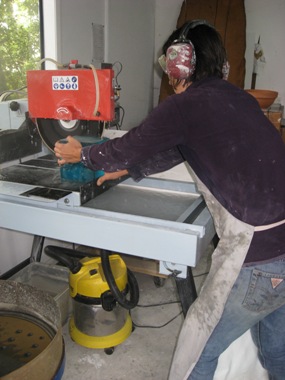casting process
Casting Process for Lead Crystal


Casting glass is not for the faint hearted. It takes energy, perseverance and some kind of crazy dedication which is very hard to identify…but never the less takes hold of the mind.
I use two methods of casting glass; the lost wax method of glass casting, a process relatively unchanged from early historic glass making and a casting method developed by Canadian Donald Robertson.
The lost wax method of Casting; (very briefly)
1) An original sculpture is created by carving or modelling usually in wax but can be clay or another malleable material which can be extracted from the investment mould. An existing object can be also be reproduced by creating a silicon or rubber mould and filling it with wax.
2) The wax sculpture is invested in a mould of 50% silica flour and 50% dental plaster. Fibre glass, grog and wire can be used to strengthen the mould if required for big works.
3) Steam is used to melt the original wax sculpture from the mould and leave a cavity for the glass. The original wax sculpture is ‘lost’ and provides the name of the process. The resulting mould becomes a vessel ready to receive glass and assume the shape and form of the original art work.
4) Lead crystal fragments are washed and placed in a clay pot reservoir which sits above the open cavity of the mould in the kiln.
5) Kilns and cast glass firing programmes are very complex and depend on a wide range of factors. In general the top temperature is between 850 to 950 degrees centigrade with an annealing temperature between 400 to 500 degrees centigrade to stabilize the stress in the glass.
6) The length of each firing is dependant on the thickness of the glass amongst other issues and can be between 4 days to several months to complete.
7) The mould is taken from the kiln at room temperature to avoid thermal shock to the glass and the plaster and silica mould is carefully broken away from the cast glass sculpture.
8) Cold working and polishing the glass is a long and arduous process depending on the level of polish and finish required for each work. Tools and technical equipment includes diamond encrusted hand sanding pads, ‘Dremel’ carving tools, diamond saws, rociprolate and linishers and jewellers paste for highly polished surfaces.
9) The glass sculpture is signed and dated and ready to be enjoyed as a fabulous work of art.